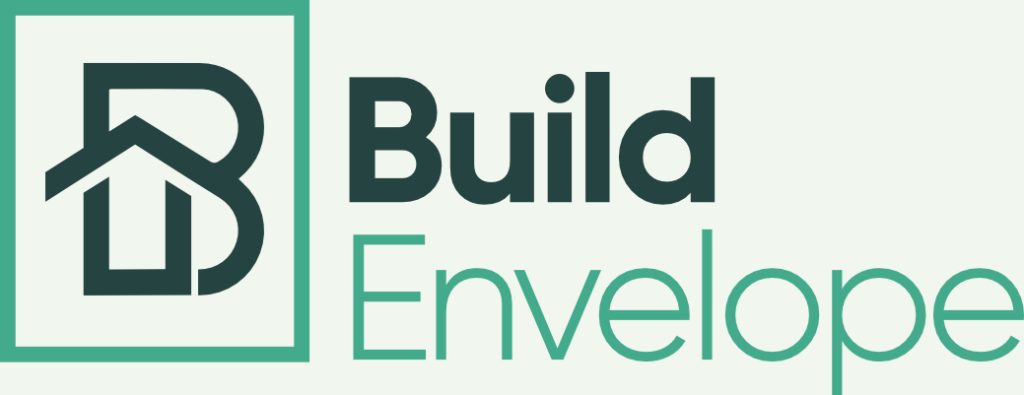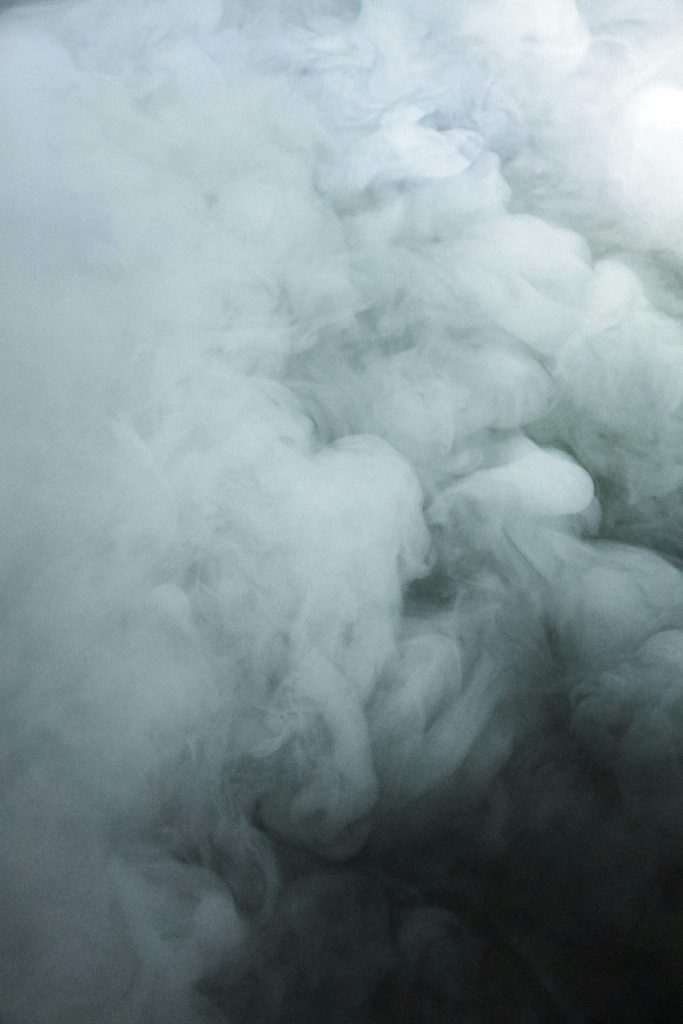
Smoke Shaft Testing Services & Air Leakage Solutions
In today’s built environment, smoke shafts play a critical role in fire safety systems, providing a pathway for smoke evacuation during emergencies. Our specialised air testing ensures your smoke shafts function as designed, protecting lives and property while meeting all regulatory requirements. Don’t compromise when it comes to fire safety—trust our proven expertise to deliver peace of mind.
Arrange A Smoke Shaft Test
Certified smoke shaft air tightness testing
We are ATTMA Level 2 accredited specialists in building performance testing. We offer cost-effective, expert assessments of smoke shaft seal integrity and air permeability. Our air testing services help building owners, consultants, and contractors prove compliance with UK Building Regulations Approved Document B and BS standards for fire safety and ventilation systems.
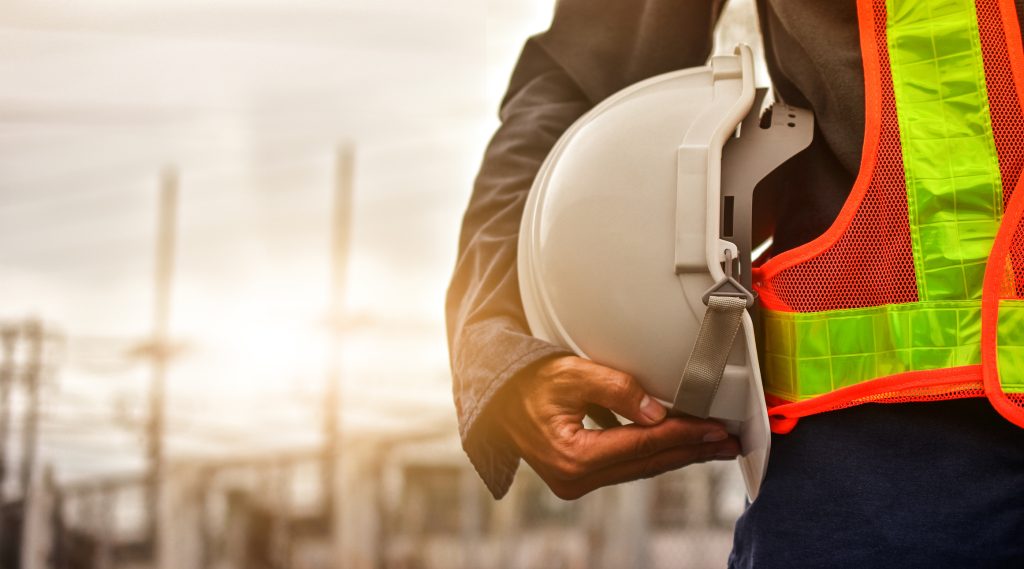
What is smoke shaft seal testing & why does It matter?
Smoke shaft testing verifies that a smoke ventilation shaft is correctly sealed, airtight, and functioning as a reliable part of a building’s life safety system. These air tests are vital during:
- New building handover
- Ongoing fire risk assessments
- Routine system maintenance
A smoke shaft might include tested and certified components, but the “as built” system must also be tested to prove that it performs correctly as a complete element of the smoke ventilation system.
As certified building assessors and air tightness testing specialists, Build Envelope offers a range of Smoke Shaft Test Services.
Why do you need smoke shaft leakage testing?
The design of smoke ventilation systems often calls for smoke shafts using natural smoke ventilation or powered mechanical smoke extract to support the role of AOV systems. To perform as required, the shaft and its non-active components must collectively be adequately sealed.
Here’s why:
- Air tightness under normal conditions is required to prevent heat loss and satisfy energy requirements of Part L.
- Air tightness on non-fire floors during a fire is essential to ensure that the effort to extract smoke is fully concentrated on the air path ventilating the fire floor and does not draw air from other floors as a result of air leaks in other areas.
- Air tightness is crucial to maintaining compartmentation and preventing smoke from escaping from the smoke shaft into non-fire floors.
Overview of Smoke Shaft Testing in the UK
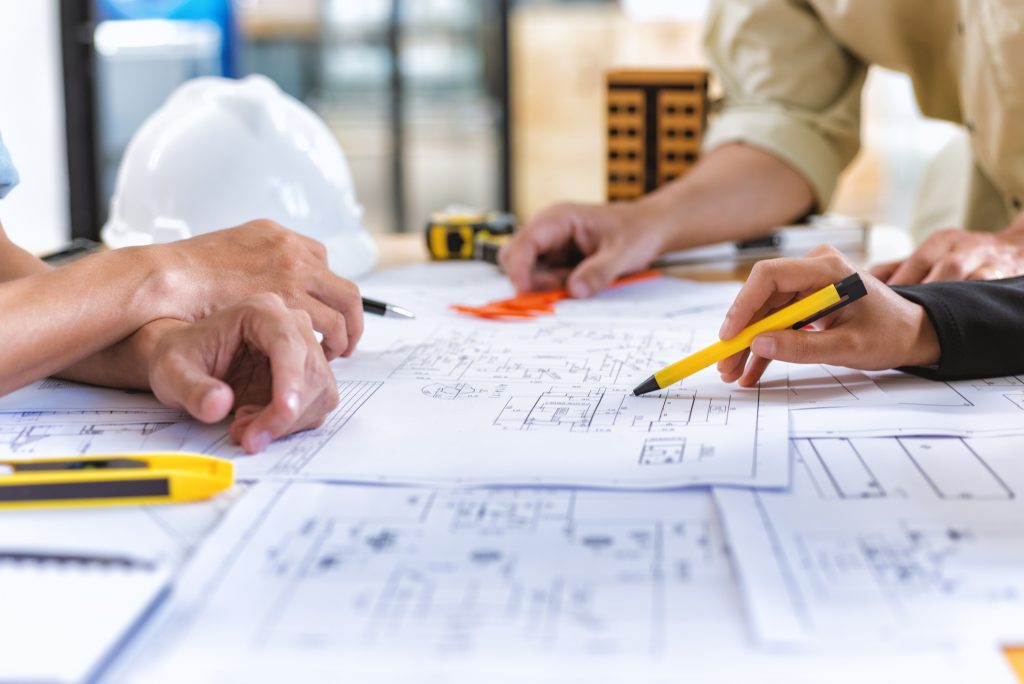
Smoke shaft testing can sometimes be overlooked—often because the shaft is rarely delivered by a single party and is normally constructed and fitted out with components from a range of different providers.
It may be assumed that a combination of factory-certified components makes for a compliant shaft; however, testing the completed ‘as built’ smoke shaft as a holistic fire and life safety device is fundamental to proving and signing off the smoke ventilation system and building.
Testing helps demonstrate that the components forming the smoke shaft element of the life safety system have been properly integrated and collectively achieve a good seal required for proper performance, which is required to satisfy building regulation approval and fulfil routine fire risk assessments and maintenance obligations.
The Need For Smoke Shaft Testing in New Buildings
Smoke shaft testing in new buildings is a legal requirement under the UK building regulations and Approved Document B. Testing helps find and fix air leakage, which could prevent the smoke shaft and associated smoke ventilation strategy from being effective in the event of a fire.
Whether your building features a Natural Smoke Shaft or one with Mechanical Smoke Fans, ensuring the airflow through the shaft is drawn only from the fire floor and automatic opening ventilation exhausts only to the outside is crucial for it to perform as intended in the event of a fire.
Smoke shafts are often core to the success of smoke ventilation strategies and are critical life safety devices in many large residential buildings. They safely direct smoke, heat, and harmful gases away from escape routes to aid the safe evacuation of occupants during a fire.
Smoke shaft testing is essential in validating the smoke shaft performance for new and existing buildings.
Key Regulations Governing Smoke Shaft Testing in the UK
There are a number of regulations in the UK enforcing and governing detailed guidelines on smoke shaft testing. Here’s a brief summary of the main regulations:
Approved Document B and BS9991 (Fire safety in the design management and use of residential buildings) set out the need for testing at the handover of new buildings.
The Fire Safety Act 2021 and Fire Safety Regulations (England) 2022 set out the responsibilities of building owners to conduct fire risk assessments, regular system testing and maintenance.
In turn, BS7346-8:2013, BS9999:2017, and BS9991:2024 (the latest version of this document) provide further details on the testing, servicing and maintenance required throughout the life of the building.
These rules, along with the record-keeping required to satisfy the principles of the Golden Thread and Fire Safety Legislation, help ensure that buildings and their associated life safety systems are delivered and remain safe and dependable throughout their lives.
Tests must also follow prescribed approaches and satisfy the requirements of ATTMA TSL Issue 1 guidelines for smoke shaft testing requirements and the air permeability standards. The tests also draw on important standards like CIBSE T23:2000, BS EN 13829, BS EN 12101-7, BS EN1366-8, and BS EN13501-4.
Certificates of testing and compliance are essential to give building owners and occupants peace of mind that systems are thoroughly tested and functioning correctly and that maintenance responsibilities are being met by building owners to ensure building safety and legislative compliance.
Why choose Build Envelope as your testing partner?
Build Envelope are experts in the field of smoke shaft testing and ATTMA Level 2 registered. We have experience across many prestigious projects and can consolidate your testing needs, providing a suite of other building tests, including:
- Sound Insulation
- Air permeability
- As-Built SAP Calculations & EPCs
- Before testing, there is a preparation stage—ensuring the shaft and its components are installed and configured correctly ready for testing.
- This is followed by the testing stage, which uses calibrated measuring equipment, specialist tools, and methods to measure the smoke shaft’s air permeability. These can also help further investigations identify where leaks may be occurring.
- Smoke Control Dampers into the shaft: BS EN 12101-8 product certification
- Any AOVs or Roof Louvres at the top of the shaft: BS EN12101-2 product certification
- Mechanical Smoke Fans if applicable: BS EN12101-3 product certification
- Smoke Shaft Ductwork: BS EN 12101-7 product certification
The Process of Smoke Shaft Testing
Smoke shaft testing requires a systematic approach to be delivered correctly, cost-effectively, and in accordance with relevant guidance.
This usually happens in two steps:
Preliminary and Readiness for Testing
As the smoke shaft has many elements delivered at different stages during the build, we recommend consulting with us early in the process to plan testing at the ideal stage and ensure timescales are in line with planned build and completion schedules (with sufficient allowance for remedial work should it be required).
Before starting any testing, the smoke shaft layout, design documents, PDF drawings, and fire strategy should be reviewed. This helps understand the different elements that make up its construction and is important for defining the work needed and firming up test time and cost according to the size of the building. You should also confirm that power to the main control panels is available prior to testing.
We also recommend that prior to testing, all test documents and certificates for components that make up the smoke shaft be collated and checked to ensure that each item is signed off to perform as expected in isolation and that when combined, they support the integrity of the overall smoke shaft performance in principle.
This normally includes checks of the relevant UKCA or CE marks and associated Declaration of Performance (DoP) Certificates for smoke shaft components – showing individual element performance according to their relevant product standards. For example:
These preliminary checks, along with a check of any testing and maintenance records, help identify potential component performance issues in advance and ensure a smooth and effective testing process.
Approach Used During Testing
During the smoke shaft testing, test equipment is configured to support an airtight seal within the shaft, and a fan is used to pressurise or depressurise it. By carefully measuring the airflow and pressure differential, our engineers can accurately determine the shaft’s air leakage rate.
The results of these tests are then compared to the required standards to ensure compliance and identify potential issues that may need remedial attention.
Navigating Common Challenges and Achieving Certification
Smoke shaft testing can occasionally expose remedial work required to structural materials, and this is particularly important to consider for new building handovers. It can be hard to reach the required level of air tightness, which makes early planning important. A proactive approach helps fix any issues in good time to prevent delays to the building’s sign-off and handover. After passing the smoke shaft air test, having the right certifications shows that the building meets the required standards.
- Sound Insulation
- Air permeability
- As-Built SAP Calculations & EPCs
- Poorly sealed openings for pipes, cable penetrations, or ductwork
- Inadequate seal between building materials inside of the shaft construction and internal plasterboard finishes
- Gaps around access panels, dampers and automated opening vents
Overcoming Common Issues and Pre-Test checks in New Buildings
A number of common factors can affect smoke shaft testing and contribute to a high risk of failure.
Problems often come from:
Because of this, we encourage handover checks of each element of work with particular attention to the onward implications for the smoke shaft integrity and pre-test checks to consider and fix any issues before testing.
Our experienced engineers can provide advice and additional support to help locate leaks and ensure adequate remedial sealing works are completed. This helps ensure the best chance of successful testing first time, on time and on budget.
Certification for Compliance, Record Keeping and Building Control Approval
We give our clients a complete report after the smoke shaft passes the air tightness test. This report includes the test results, the air leakage rate, and a certificate of testing for building regulations approval.
Test records, certificates and date information should be stored securely as part of official documents for the building to demonstrate that the building meets fire safety standards and for future inspections, audits, building lease or sale.
Approach Used During Testing
During the smoke shaft testing, test equipment is configured to support an airtight seal within the shaft, and a fan is used to pressurise or depressurise it. By carefully measuring the airflow and pressure differential, our engineers can accurately determine the shaft’s air leakage rate.
The results of these tests are then compared to the required standards to ensure compliance and identify potential issues that may need remedial attention.
Routine Testing and Servicing In Existing Buildings
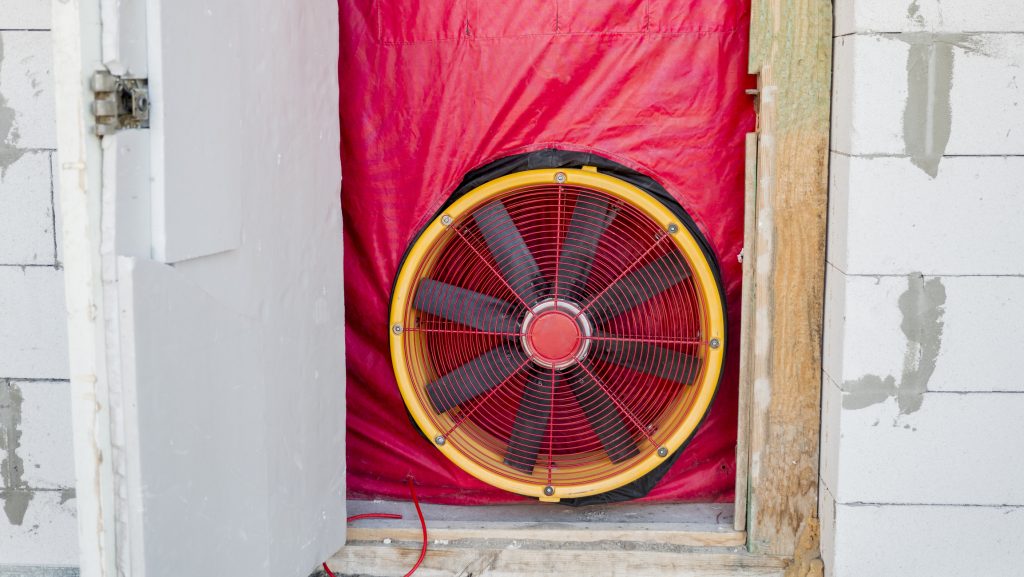
Smoke shaft testing is equally relevant for existing buildings, which by law require regular testing and maintenance to ensure their smoke control systems still work well and follow building regulations.
Maintaining Building Safety and Compliance with Smoke Shaft Testing in Existing Buildings
Over time, things like building movement, wear, and minor repairs can affect the airtightness of a smoke shaft and its components, reducing its effectiveness during a fire. Routine air pressure testing helps verify system integrity and identify problems early before they become serious.
By scheduling annual tests as part of required testing and maintenance, building owners and managers can ensure their smoke control systems meet the required levels of building safety and current regulations.
Contact us now to discuss your building needs
Contact our friendly expert team today to discuss your building test needs and get a formal quote.
Have you got a project in mind?
Email Us
info@buildenvelope.co.ukCall Us
01386 365145Here’s some links to more useful information:
- CLICK HERE for insightful recourses from the Smoke Control Association
- CLICK HERE for the technical standards of ATTMA
- CLICK HERE for a great article on smoke shaft design by LABM Online
/* -- The root styles must go in the element of the structure with the name "Form". --*/
.smokeshafthero__form{
/* Styles applied to all checkboxes */
& .options-wrapper{
& li{
display: flex;
align-items: start;
flex-wrap:nowrap;
}
/* Unique styles for privacy policy checkboxes */
& label[for="form-field-vmwaoi-0"] {
font-size: var(--text-s);
line-height: 100%;
/* Color link */
& a{
color: var(--primary)
}
}
}
}